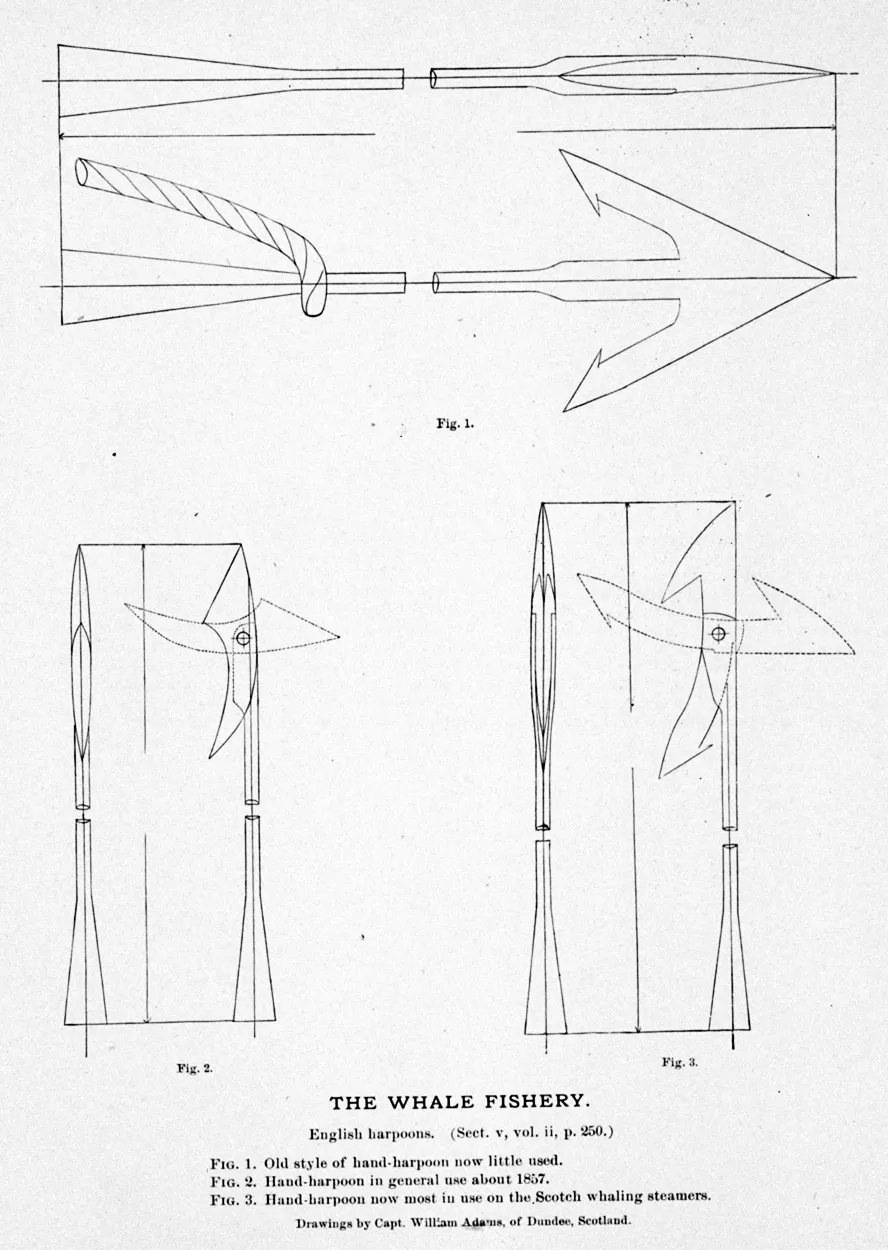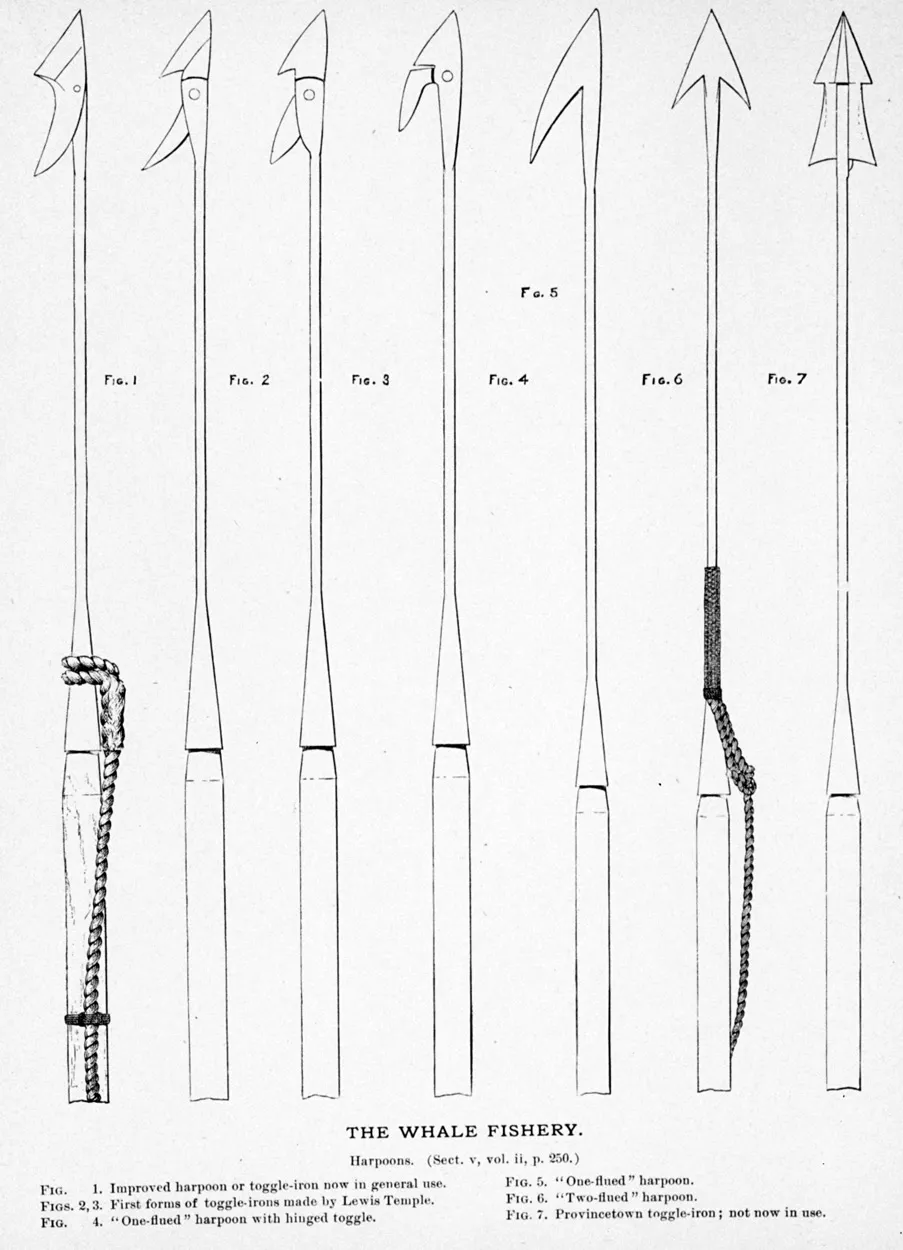Hand harpoons
Whales and Whaling pictures
Next
Previous
Back to gallery
Back to whale and whaling
thumbnails
Left picture - English harpoons. Fig. 1. Old, original style harpoon, Fig. 2. Hand harpoon in general use about 1857, Fig. 3. Hand-harpoon in general use on Scotch whalers. Drawings by Capt. William Adams, Dundee, Scotland.
Right picture - Harpoons. Fig 1 Improved harpoon or toggle-iron now in general use, Figs. 2, 3. First forms of toggle-irons made by Lewis Temple, Fig. 4. "One-flued" harpoon with hinged toggle, Fig. 5. "One-flued" harpoon, Fig. 6. "Two-flued" harpoon, Fig. 7. Provincetown toggle-iron; not now in use.
The purpose of the hand harpoon was not to kill the whale, but to weaken it and allow the whalers to move in for the kill. A much-used refinement of this technique for much of the pre-industrial era of whaling was that the harpoon was used to fasten the whaling boat to the whale. As the whale swam off in a panic, it was forced to drag the whaling boat behind it, making it harder for it to dive and tiring the whale more effectively.
Initially harpoons were like simple large arrow shapes with barbs, though these frequently came out of the whale which then stood a better chance of escape. Later, very successful refinements of this were the harpoons with toggle heads that penetrated the whale easily, but then swiveled through 90° so holding them fast much more effectively.
Harpoons were made of soft iron and would bend easily when struck in the whale, this would make them more difficult to remove and so they were less likely to come out than if they were made of stiffer steel.
Previous
Next
Back
to thumbnails
Picture used courtesy NOAA


